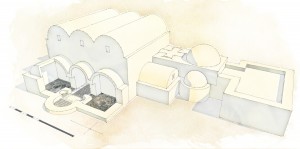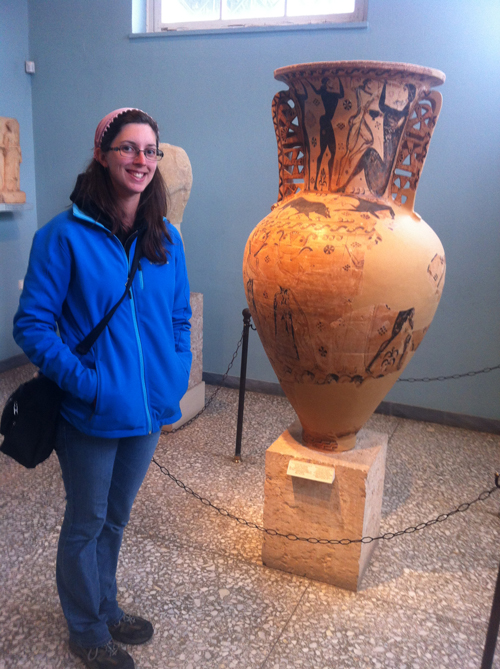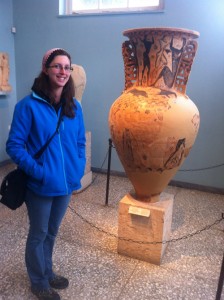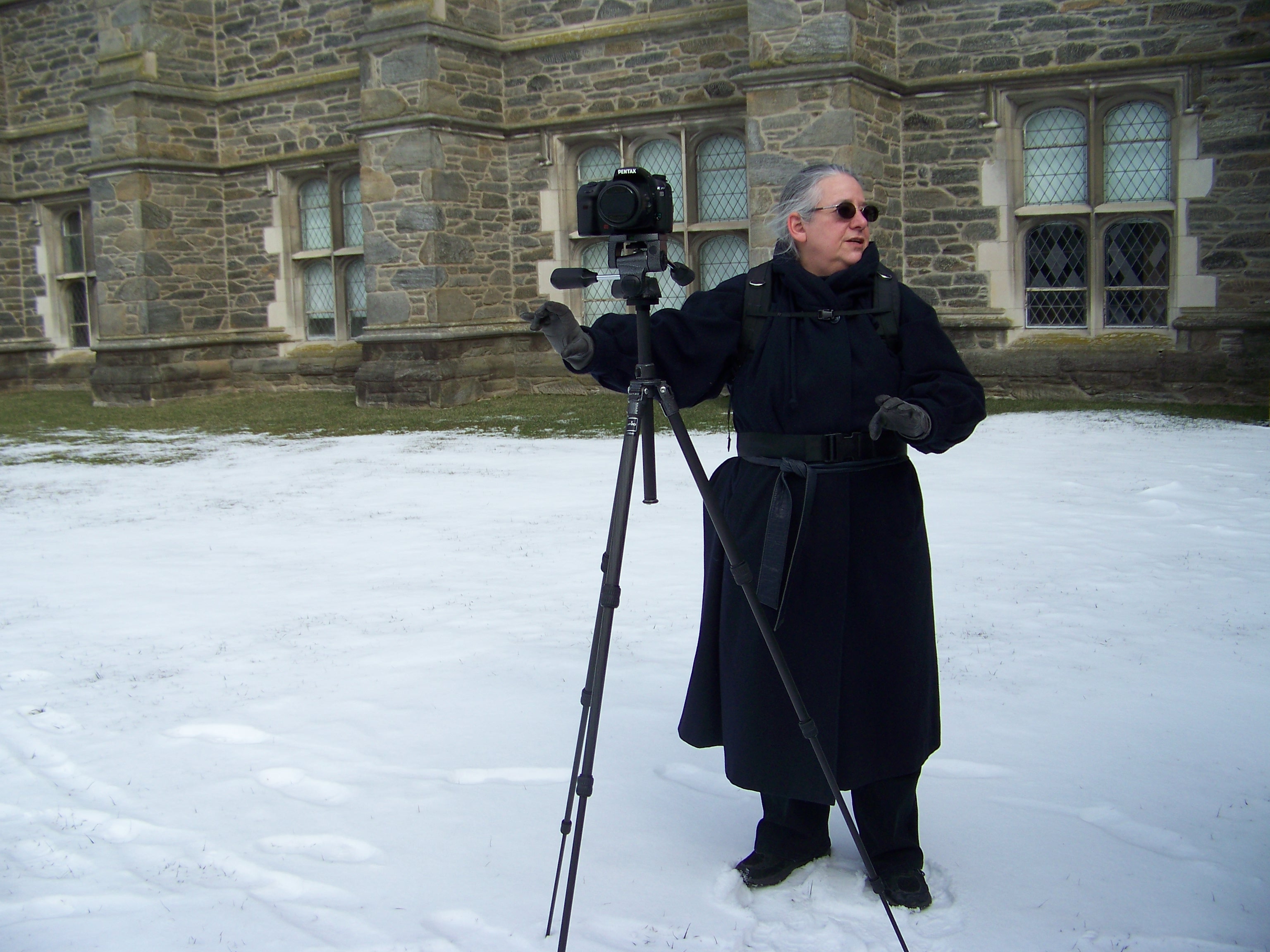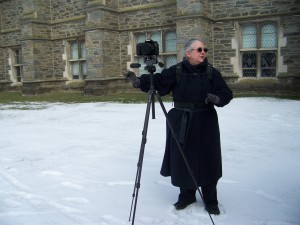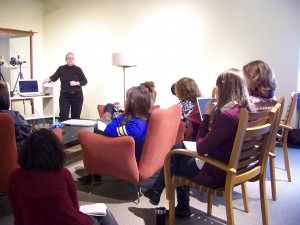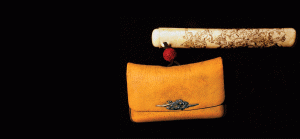There were many graduates, past and present, active in various roles at the annual meeting of the College Art Association in New York this last February; among those there were (in alphabetical order), Ben Anderson, Mary Ann Caws, Therese Dolan, Lori Felton, Marie Gaspar-Hulvat, Johanna Gosse, Jennifer Griffiths, Allison Levy, Mey-Yen Moriuchi, Marjorie Och and Marissa Vigneault. In addition David Cast (Eugenia Chase Guild Professor in the Humanities at Bryn Mawr College), spoke in a session with Tina Bizzaro and Maureen Pelta, (both of whom received their doctorates from Bryn Mawr).
Report from the Field: Alex Bray Hunts Medieval Images in Jordan
Alex Bray (Ph.D. candidate, History of Art) is spending the academic year in Jordan. He has just completed a CAORC ACOR Pre-doctoral fellowship, and has now begun the SSRC IDRF-funded portion of his research travel. Thus far, Alex has been able to visit a number of sites and museums related to his research on images of hunting produced within the Umayyad empire, and to discuss his research with scholars who have excavated at some of these sites. Recently, he has been visiting the excavated ruins of early medieval churches and domestic complexes throughout the region in order to see and photograph related mosaics of predation and hunting.
Alex is currently focusing on an excavation of a late seventh- or early eighth-century bathhouse associated with an estate known as Qastal, only a few kilometers west of the Queen Alia international airport. The bathhouse was excavated a little over a decade ago, but a significant portion of the structure was paved over before it was discovered by archaeologists. Although they were only able to uncover about a fifth of the building’s foundations and floors, this was enough to make it clear that the bathhouse resembles those at two other Umayyad sites in Jordan, known as Ḥammām al-Ṣarāḥ and Quṣayr ʿAmra. In addition to researching the significance of the impressive mosaics of predation that were discovered in the bathhouse, Ales is attempting to situate them within an architectural context based on these more complete monuments.
Using plans of Quṣayr ʿAmra and the excavations at Qastal, he has created a digital model of the building that probably once existed at Qastal (seen above). To clarify that this is only a hypothetical reconstruction, he has used image editing software to render his model in a watercolor finish, rather than risk creating a misleading photorealistic rendering.
Report from the Field: Danielle Smotherman Digs into Research Abroad
Danielle Smotherman is spending the 2014-2015 academic year at the American School of Classical Studies at Athens as an associate member. Danielle has joined the regular members on trips around Greece, visiting archaeological sites and museums as well as giving reports on specific monuments and sites. These trips offer firsthand experience of archaeological sites spanning from the prehistoric to modern times, with a focus on antiquity, as well as in-depth knowledge of the topography of the regions. During the winter term, Danielle continued her visits to area sites and monuments, both within Athens and the greater region of Attica, and met with important scholars in the field.
As part of the program, Danielle has been researching three votive relief fragments from excavations at Corinth, which will be included in a future Hesperia article. In Athens, she is also accomplishing important research for her dissertation, which has a working title of “Decoding Meaning: Understanding Communication in Athenian Vase-Painting of the Archaic and Classical Periods.”
In the spring and summer, Danielle will participate in three excavation projects at Corinth, Greece; Naukratis, Egypt; and Vacone, Italy. At Vacone, Danielle is hoping to apply Reflectance Transformation Imaging (RTI), a technique she first learned and applied to pottery in the Special Collections at Bryn Mawr College, to small finds recovered from the Roman villa. On a non-academic note, in December, Danielle and Wesley Bennett, also in the department of Classical and Near Eastern Archaeology, were engaged by the temple of Poseidon at Sounion.
Danielle’s studies at the ASCSA are funded by the Graduate School of Arts and Sciences, the department of Classical and Near Eastern Archaeology, and the Ridgway Curatorial Fellowship.
Professional Photography Workshops for Students in the Graduate Group
Students from the Graduate Group in Archaeology, Classics and the History of Art kicked off the Spring 2015 term with a series of photography workshops led by renowned art photographer Genevra Kornbluth. Dr. Kornbluth hosted three days of workshops on a range of topics, including how to photograph art and artifacts in gallery and storeroom settings and an advanced lesson in Photoshop.
Emily Moore, a Ph.D. candidate in Archaeology, explained that she attended Dr. Kornbluth’s sessions because photography will play a crucial role in her dissertation research. “My dissertation is on Roman visual representations of Northern Barbarians. While representations of Germans and Gauls have been well documented, those of the Dacians are not and what few images do exist are not of very good quality. Therefore, during my research, I will need to photograph these objects for study.”
Nava Streiter, third-year graduate student in History of Art, attended several of the sessions and was impressed with Dr. Kornbluth’s thorough instructions for capturing fine visual details. “She showed us that it can take hours to photograph even small objects, if the photographer is really attentive to their unique characteristics.” Arielle Winnik, also a third-year History of Art student, added, “Dr. Kornbluth then taught us how to stack images in Photoshop in order to show every part of the image in focus.”
Beyond the technical lessons, Dr. Kornbluth also stressed the practical value of obtaining excellent, high-quality images of the objects one studies. According to Streiter, “In the storeroom session, she taught us how to light and shoot a tiny, inscribed gold ring so carefully that the pictures captured fine marks of production and use. We really saw why good photographs can generate richer, more detailed discussions of material history.”
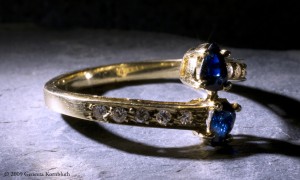
Dr. Kornbluth rounded out her visit with a scholarly lecture on “Roman and Early Medieval Amulets: Science, Magic, and Practicality,” which was beautifully illustrated with several of her wonderful photographs of objects from around the world.
Dr. Kornbluth’s visit was organized by History of Art professor Alicia Walker with the support of The Graduate Group in Archaeology, Classics and History of Art; The Center for Visual Culture; and The 1902 Lecture Fund. For more information about Dr. Kornbluth’s photography, visit: http://www.KornbluthPhoto.com
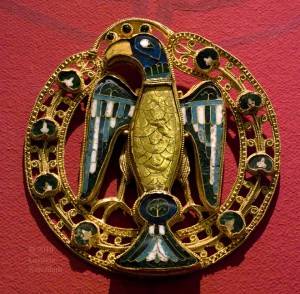
Anna Moblard-Meier Interprets Japanese Art Objects
History of Art graduate student Anna Moblard-Meier brings her deep study of Japanese art to Special Collections at Bryn Mawr College, guiding visitors through several of the College’s Japanese art objects.
For more information, click here.

